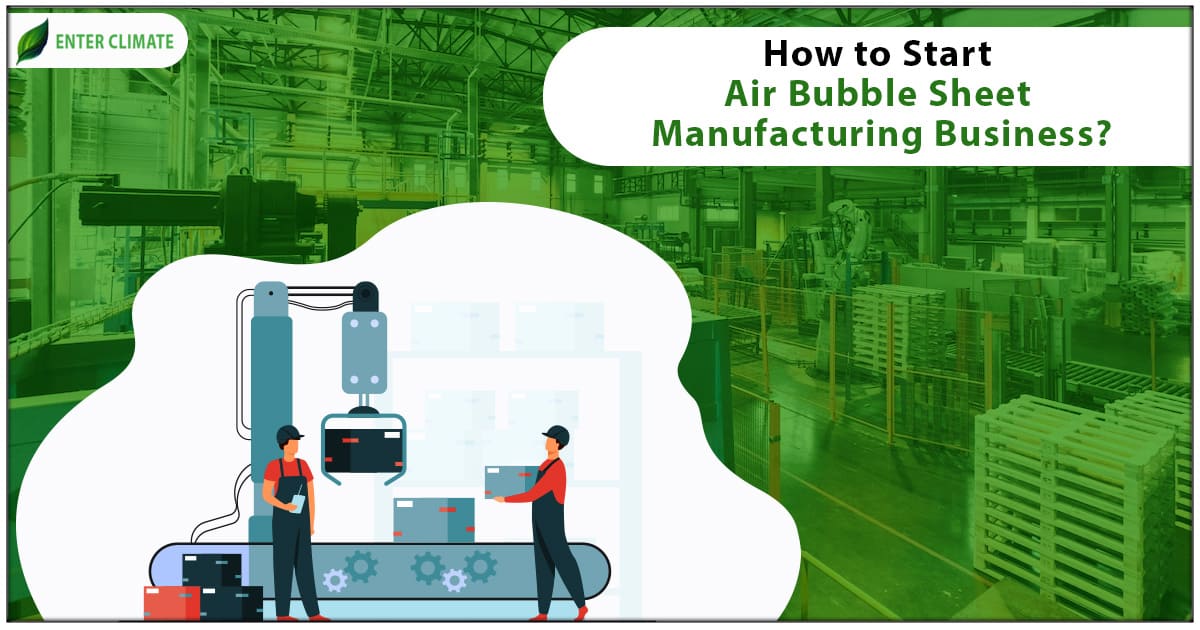How to start Raw Agro residue Business- Briquette and Pellets manufacturing?
 12 Jun, 2023
12 Jun, 2023 
Agro residue Business is crucial for meeting the energy demands of developing countries. Fossil fuel scarcity, rising prices, and environmental issues like global warming have highlighted the importance of biomass energy. Biomass production and utilization have the potential to achieve zero net carbon dioxide accumulation in the atmosphere by balancing carbon dioxide release during combustion with its consumption during photosynthesis. Briquetting is a compaction technology that involves applying pressure to agro residues, with or without a binder, to create compact briquettes with high bulk density, low moisture content, uniform size and shape, and good burning properties. The pelletization process includes drying, grinding, homogenization, and densification of the raw material. Agro residues are a promising choice among various types of biomasses due to their widespread availability as a low-cost energy source.
Agro residue Business- Briquette and Pellets manufacturing
Biomass briquettes are becoming increasingly popular in India for green energy due to the easy availability of raw materials. The Indian government’s efforts to promote biomass briquettes for co-firing in thermal power plants have significantly boosted the industry. The industry can overcome its existing logistical and supply challenges by implementing digitization, production incentives, and effective inventory and demand planning. The global biomass pellet market was valued at $9.05 billion in 2021. It is projected to grow at a compound annual growth rate (CAGR) of 6.75% from 2021 to 2030, reaching a market value of $16.29 billion. The market’s growth is primarily driven by increasing consumer awareness of the benefits of using biofuels and other renewable energy sources for heating and power generation purposes in residential, commercial, and industrial sectors. This growing understanding of renewable energy advantages contributes significantly to the expansion of the biomass pellet market.
Briquetting Process
The briquetting process in Agro-residue Business involves several steps, which are as follows:
- Raw material collection: Any combustible material not in a convenient shape, size, or form for immediate use as fuel is suitable for briquetting.
- Raw material preparation: This step includes drying the raw materials, reducing their size, and mixing them with binders in the correct proportions, which further includes the following steps: –
- Drying: The raw materials usually have higher moisture content than what is required for briquetting. Drying can be achieved through open-air drying, solar drying, heaters, or hot air.
- Size reduction: The raw materials are initially reduced in size through processes like shredding, chopping, crushing, breaking, rolling, hammering, milling, grinding, or cutting until they reach a suitable small and uniform size (1 to 10 mm).
- Raw material mixing: Combining multiple raw materials to create briquettes is advantageous. Mixing is done in the appropriate proportions to ensure good compaction and a high calorific value in the final product.
- Compaction: The compaction process occurs inside the briquetting machine and depends on the chosen briquetting technology.
- Cooling and storage: After compaction, the briquettes undergo a cooling process and are then stored for future use.
Pelletization process
The pelletization process includes
- Drying
- Grinding
- Homogenization and
- Densification of the raw material.
This process improves its properties for storage, transportation, and handling.
Establishing a biomass pellet plant can be a lucrative venture utilising biowaste for manufacturing. The resulting pellets can serve as fuel for various applications, including stoves, furnaces, and boilers. A biomass pellet plant can be profitable by having the appropriate equipment and a well-developed business plan. Several considerations should be kept in mind when starting a biomass pellet plant. Firstly, it is crucial to secure a reliable source of biowaste, which can range from wood chips to agricultural waste. Additionally, acquiring the necessary equipment for processing the biowaste into pellets, such as a pellet mill, is essential.
Developing a marketing strategy is the next crucial step. This involves identifying potential customers for the pellets. Various marketing approaches can be utilized, including online platforms, dealership partnerships, or even establishing a retail location.
With proper planning and effective execution, a biomass pellet plant has the potential to thrive as a successful and profitable business venture.
This process improves its properties for storage, transportation, and handling.
Establishing a biomass pellet plant can be a lucrative venture utilising biowaste for manufacturing. The resulting pellets can serve as fuel for various applications, including stoves, furnaces, and boilers. A biomass pellet plant can be profitable by having the appropriate equipment and a well-developed business plan. Several considerations should be kept in mind when starting a biomass pellet plant. Firstly, it is crucial to secure a reliable source of biowaste, which can range from wood chips to agricultural waste. Additionally, acquiring the necessary equipment for processing the biowaste into pellets, such as a pellet mill, is essential.
Developing a marketing strategy is the next crucial step. This involves identifying potential customers for the pellets. Various marketing approaches can be utilized, including online platforms, dealership partnerships, or even establishing a retail location.
With proper planning and effective execution, a biomass pellet plant has the potential to thrive as a successful and profitable business venture.
Requirements in Briquetting
To establish a briquette production unit in Agro-residue Business, the following essential requirements must be met:
- Land requirement: A minimum land area of 1 acre is necessary to accommodate the storage of raw materials for briquetting and the produced briquettes.
- Raw materials: Ensuring a consistent supply of raw materials is a crucial factor for the profitability of briquette production.
- Drying facility for raw materials: Since commonly available raw materials tend to have higher moisture content, a drying facility is essential. Various drying technologies such as solar driers, heaters, or hot air generator systems are needed to reduce the moisture content to the desired level for effective briquetting.
- Shredding machine: A shredding machine with a motor capacity of at least 5 hp is required to pulverize agro residues into powdered form, preparing them for briquetting.
- Briquetting machine: A high-pressure hydraulic piston press-type briquetting machine, powered by a motor with a minimum capacity of 50 hp, is necessary for producing binderless briquettes from agro residues.
Advantages of Agro residual briquettes
Agro residual briquettes offer several advantages, including:
- Increased net calorific value: The briquetting process enhances the energy content per unit volume of the material.
- Easy transportation and storage: The final briquettes are compact and convenient to transport and store.
- Uniform size and quality: The briquettes are standardized in terms of size and quality, ensuring consistent fuel performance.
- Residue disposal solution: Briquetting helps address the issue of waste residue disposal by converting them into useful fuel.
- Reduction in deforestation: By providing an alternative to fuelwood, agro residual briquettes minimise deforestation.
- Prevention of spontaneous combustion: The briquetting process significantly reduces or eliminates the risk of spontaneous combustion in waste materials.
- Decreased biodegradation: Briquetting mitigates the biodegradation process1 in residues, thereby extending their usefulness.
Advantages of Pellets Manufacturing
Agro-residue Business of Pellets Manufacturing offers several advantages, including:
- Renewable and sustainable: Bio pellets are derived from renewable biomass sources, making them a sustainable energy option. They can be continuously produced without depleting finite resources.
- Low carbon footprint: Bio pellets have a significantly lower carbon footprint compared to fossil fuels. The carbon dioxide emitted during their combustion is offset by the carbon dioxide absorbed during biomass growth, resulting in a net reduction in greenhouse gas emissions.
- High energy density: Bio pellets have a high energy density, meaning they can generate a substantial amount of heat and power using a relatively small quantity of fuel. This makes them efficient and cost-effective for energy production.
- Clean burning: Bio pellets undergo clean combustion, producing minimal pollutants and emissions. They contribute to improved air quality by releasing fewer harmful substances into the atmosphere compared to traditional energy sources.
- Environmental friendliness: Bio pellets are considered environmentally friendly due to their low emissions and sustainable nature. They help reduce pollution, mitigate climate change, and contribute to a more sustainable energy future.
Conclusion
The raw Agro-residue Business, specifically manufacturing briquettes and pellets, presents promising opportunities in the renewable energy sector. The utilization of agricultural residues as a source for producing briquettes and pellets offers several advantages. These include the enhancement of energy density, ease of transportation and storage, and the ability to address the issue of residue disposal effectively. It is highly recommended to take expert consultation that can offer a comprehensive understanding of the industry by providing an overview, market structure, and classification so that you can rely on the accurate data analysed by the experts.
FAQ
- What is the issue associated with agricultural residues?
Improper disposal of agricultural solid wastes in rural areas can block waterways, resulting in floods that may cause loss of life and property.
- What are the primary constituents of agro residue?
Agro residues comprise materials such as rice straw, wheat straw, rice husk, and corn stover. These residues are typically left on fields after harvests and are used for purposes like fodder, landfill material, or burnt in certain areas.
- What is the most suitable method for disposing of agricultural waste in residues?
While hazardous agricultural waste must be incinerated to prevent harm to humans and the environment, fortunately, there are alternative disposal methods for agricultural waste. These include composting and recycling, which help protect the environment.
- What is the definition of briquetting?
Briquetting is a process that involves drying, grinding, sieving, compacting, and cooling. A typical briquetting unit consists of three main components:
(1) Pre-processing equipment,
(2) Material handling equipment, and
(3) Briquetting press.
- What is the industrial meaning of pellets?
In industry, pellet fuels, or pellets, refer to solid fuels made by compressing organic materials. Pellets can be produced from five general categories of biomass: industrial waste and co-products, food waste, agricultural residues, energy crops, and untreated lumber.
Read our Article:How To Make A Profit With Your Renewable Energy Business Using Renewable Energy Certificate?













